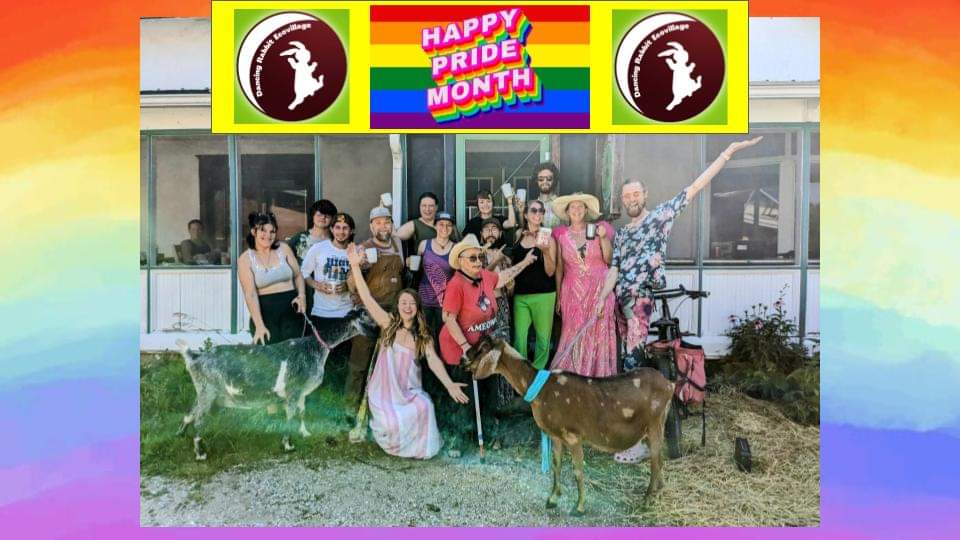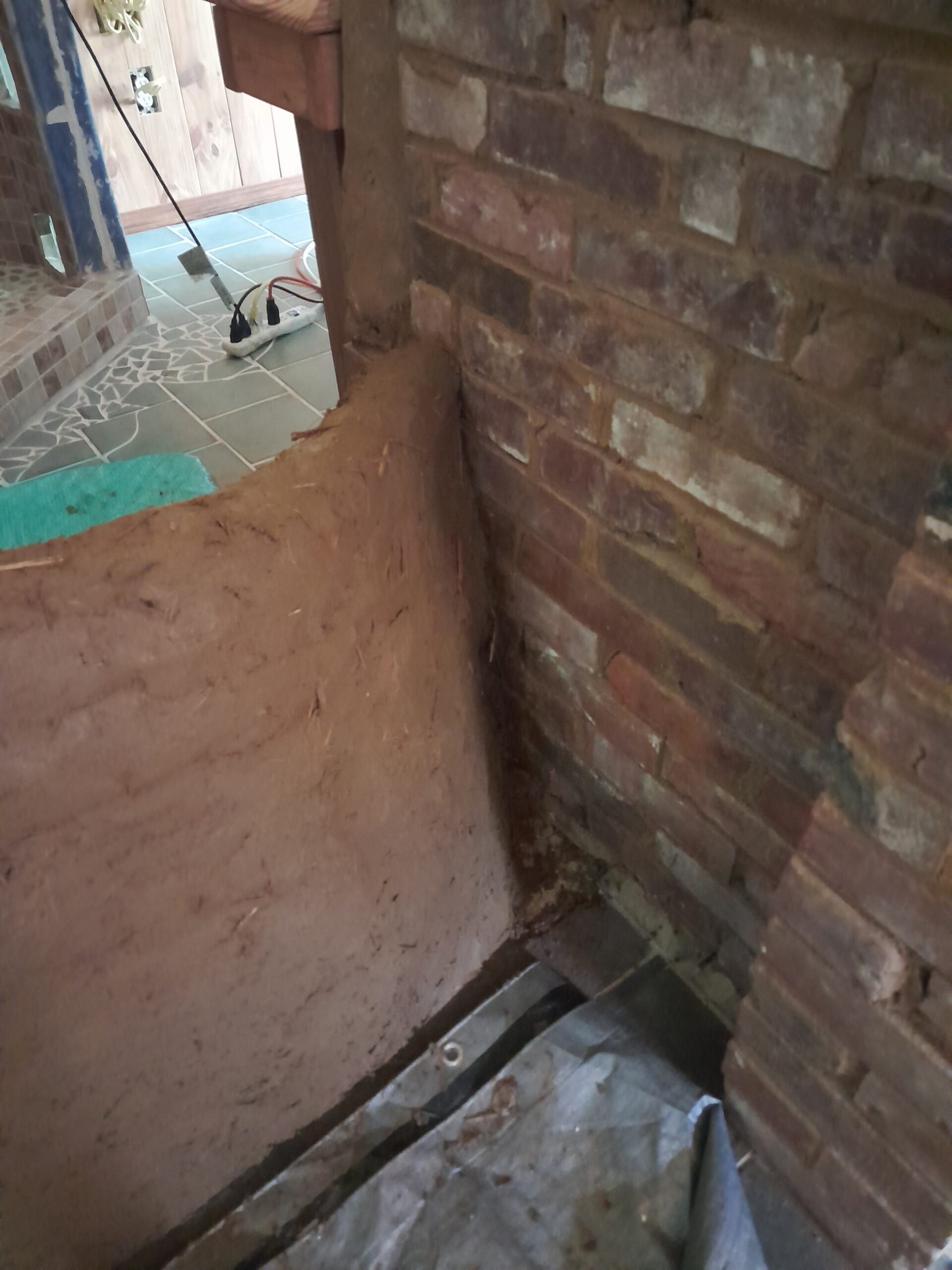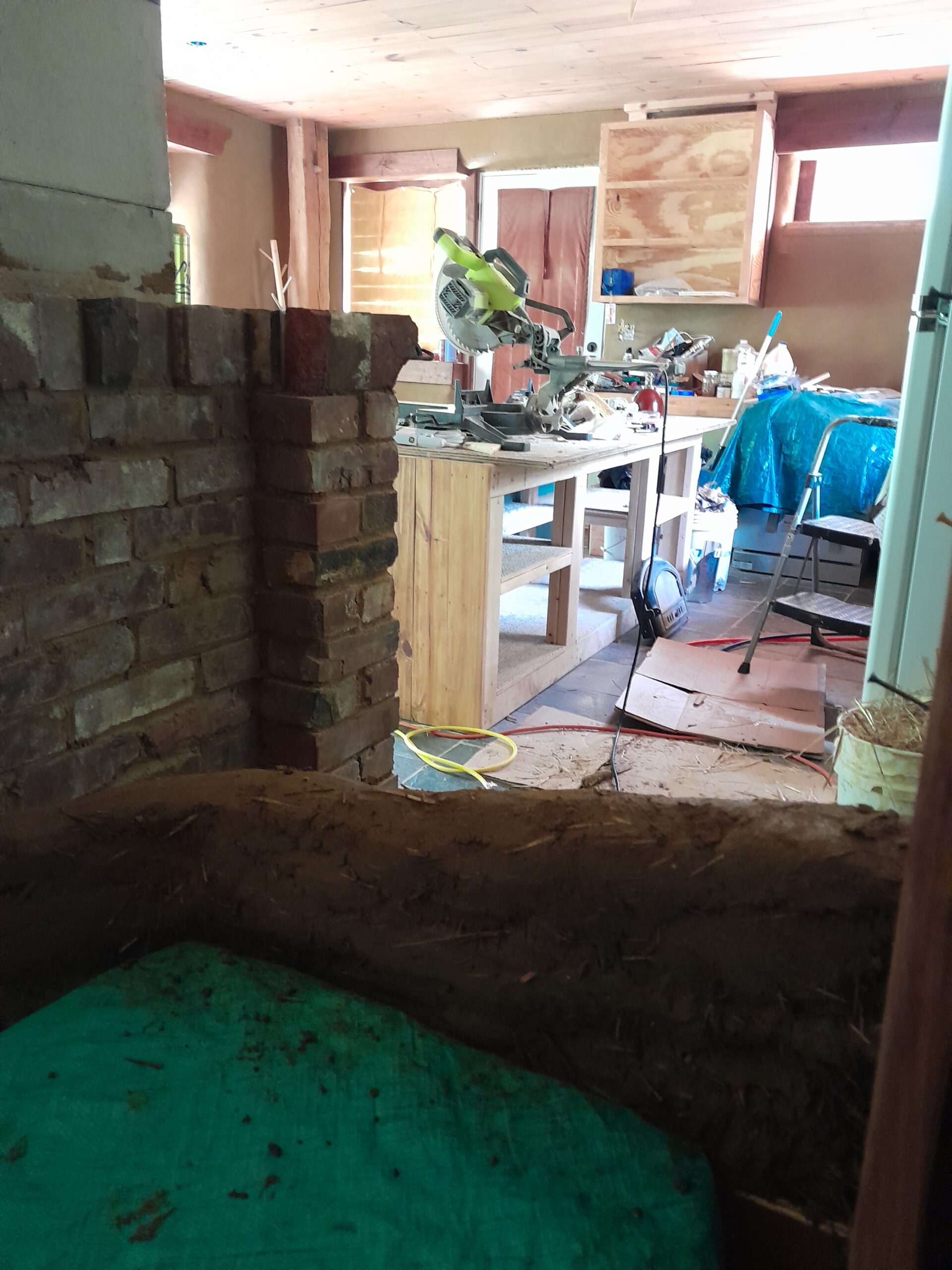Cat (Hopefully Not) on a Hot Tin Roof: A Dancing Rabbit Update
Published: Tue, 06/25/24
Updated: Tue, 06/25/24

Cat (Hopefully Not) on a Hot Tin Roof:
A Dancing Rabbit Update
The many metal roofs in the village are getting a work out these last 10 days as our weather shifts from pleasantly warm with plenty of rain, to hot, hot, hot. Just two weeks ago I listened to birds chasing each other and rolling around on my metal roof in seasonal mating behaviors, which was a happy sound, even though distracting. No living creatures (except perhaps wasps) are spending time on anyone’s roof right now. By the time I return from coffee group each morning, I can hear the
tick-tick-tick sound of my metal roof heating up.
Liz here, dearest gentle reader, with the latest news and rumors from Dancing Rabbit Ecovillage.
We’re in the middle of a two-week heat spell. It’s the kind of heat that makes people here start to cut their hair short. Lots of talk at morning coffee group about how to keep our houses cooled off, especially for people who are new to living in straw bale homes.
I don’t think it’s record setting heat, but in the seven years I’ve been here, the length of high heat periods seems to be getting longer, and more frequent.
How do straw bale homes fare in high heat? Well, like conventionally built homes, that depends. If temps cool off during the night, and you open your windows to let cool air in, and then you close those windows during the day, it helps keep your house cool. A straw bale building will then hold that cool air in the house for longer than a conventionally built house because straw bales have a higher insulation value then most conventional homes, and the clay plaster will slowly release cool air
inside during the day that was absorbed at night.
And then there is a straw bale house’s super power, which conventionally built houses can’t compete with. The clay plaster in a natural building regulates temperature and humidity within the interior, without any energy input.
And finally, if nights don’t cool off, eventually straw bales homes can’t store enough cool air at night, and they start to warm up during the day. That’s when AC or a mini split comes in handy, for a few days. That’s when extra solar panels to offset the increased electricity use comes in handy. But using nature to provide free cooling for part of a heat wave is a definite step in the right direction.
And if talking about the heat could cool us off, DR would have the coolest people in the region. There’s nothing like a heat wave, tornado, blizzard, polar vortex, hail storm, freezing fog, flooding, and any other form of extreme Midwestern weather, to give a group of people a common topic of conversation to rally around.
There is much afoot this year in our modest village. Mae and Apple are hosting many more wexers than we’ve had in the past seven years. These work exchange visitors come for several weeks to several months and can be signed out by Rabbits to do anything from gardening to natural building. Since May we’ve had six at a time, or so, on farm. When not signed out, they cultivate a large produce garden that contributes food to the wexer kitchen co-op, or do other village projects.
The second regular visitor program has wrapped up. The Dane family and their kids are staying on and their residency has almost gone through process. I am happy to say that Julian started work at the Hub this last week, helping us build a cob wall between the kitchen and bathroom. Kenny has helped with research for the Hub to create new cooperative and legal structures as we move into making our sub community a safe and sustainable entity. More announcements on that in July.
The trend this year is having more families coming to visit us through our visitor programs. I’m trying to look positively on how this is putting more pressure on available housing, because I’m hoping at some point our village will respond with actually building more houses. Rumor has it that Ciaran and I are hatching a plan to build a new kind of sustainable housing in the coming months.
Ciaran and Xela are busy bees setting up a daycare and a kitchen co-op to meet the needs of the six families that have chosen DR as their new home in the last eight months.
New people moving to DR often means new energy at the Hub straw bale natural building project, and in the last several weeks, we have welcomed Julian and Kenny, and started a local teen, Cole, from neighboring Red Earth Farms, working for the summer. I have been ridesharing to the gym with Cole and the Gil family for the last year and a half, so I already predict that Cole will be a reliable and productive summer intern.
In other Hub news, K* and Alex have teamed up to co-create an outdoor shower near the south side of the building. Outdoor showers can be simple when there is a beautiful setting and we have that with ours. It is set at the edge of a shady tree grove and the snail shell curve of the walls ensures privacy. They have also started extending the tool shed roof to protect the mural that Paula painted last year.
I am witnessing milestones each week that signal to me that the Hub is moving into some final building stages. This winter, Ciaran and I made major strides in finishing the bathroom. Right now, Ciaran is moving swiftly and cheerfully toward finishing all the trim on both sides of the bathroom door, creating some truly beautiful intersections of walnut, ash and pine wood. He fashioned an Osage tree limb into a base to attach a light and articulating mirror to, above the bathroom sink. Spaces
above the door will have panes of glass, to let more light into this room.
Last week I started cranking out cob plaster so that Julian and Cole can help me build a wall between the kitchen and the bathroom, finally closing in the bathroom. Embedded in the cob wall is an air intake duct and copper pipes that will go from the masonry heater to water tanks in the utility room. On the surface of the wall on each side will be clay plaster sculptures, a classic feature of natural building. You’ll have to come visit DR to see what sculptures we create…
We will install recycled glass bottles at the top of the wall to let more light in. Once that’s done, and Ciaran builds a bathroom door, we can offer a humey and a sink to wash hands installed to our to Rebecca, the Hub’s social media creator, who returns to DR for August and September, and my sister, who is returning to DR for a month in September, both of whom will be staying at the Hub. With guests in both lofts, the enclosing of the bathroom, and an outdoor shower, sounds like the Hub is
becoming pretty operational, am I right?
DR has witnessed a momentous natural phenomenon this season, starting with the hatching of cicadas in their 17-year reproductive cycle. It hadn’t seemed so extreme to me for the first several weeks, but on a sunny day when I was mixing clay in buckets with a big drill mixer in the hot sun, I began to notice more and more cicadas flying their two-inch bodies into me. Each time one landed on me with the sensation of a spit ball, I involuntarily yelled out and pulled it off. I finally realized
that the sound of the drill was attracting them over to me. As I marvel aloud each season, nature is fierce in Missouri.
In what I hope is a new tradition of a gay pride morning coffee gathering and parade, some festivally dressed participants posed for a photo before beginning the procession this last Saturday morning.
And so, dear reader, our time here draws near.
Until we meet again,
Liz Hackney
 |
Liz Hackney is the editor of this newsletter. She is a self-proclaimed and unapologetic Bridgerton fan. And yes, she also holds Miss Austin’s works in high esteem. It’s complicated. |
Dancing Rabbit Ecovillage, 1 Dancing Rabbit Lane, Rutledge, MO 63563, USA
Unsubscribe | Change Subscriber Options





